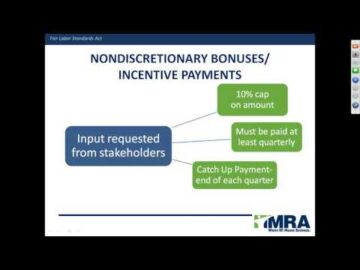
The multi-step income statement categorizes operating and non-operating incomes and expenses. The users will know the profit earned from the primary activities of buying and selling goods and how it differs from the non-operating activities. The statement shows the line items gross profit and operating income, which are metrics commonly looked at by management, investors, and creditors.

The single-step income statement is the easiest income statement format to prepare, focusing mainly on net income. One of the most important advantages of single-stepping when creating an income statement is that this single-step format is very easy to prepare. It focuses on net income, so it is especially helpful if you need to make an assessment that is based on your business’s bottom line.
Calculate Operating Income
This type of income statement allows businesses to conduct a detailed analysis of their financial performance in a specific accounting period. As discussed above, the multi-step income statement is like a single-step income statement, but the difference lies in the representation part. In a multi-step income statement, the calculation is broken down into several parts to arrive at the net income figure at the bottom line.
Such specificity gives stakeholders a sharper view of how a company runs its business, by detailing how the gross, operating, and net margins compare. One of the biggest differences between a single-step income statement and a multi-step income statement is the ability to calculate gross profit. This metric is important for business owners that need more detailed information on both business profitability and financial performance. In this section, you are finding your operating income after essential expenses.
Example of Multi-Step Income Statement
Other income and expenses like interest, lawsuit settlements, extraordinary items, and gains or losses from investments are also listed in this section. Unlike the operating section, the non-operating section is not split into subcategories. Here the operating income obtained is added to the non-operating expense, revenue, gains, and losses, where the final resultant is the net income for the period. If you’re still struggling to track your business revenues and expenses in multiple ledgers, it may be time to move to accounting software.
As you can see, the multi-step income statement gives the reader much more information about the company’s financial position than the single step income statement. List out the non-operating revenues and expenses such as interest, gains and losses on asset sales, and other one-time revenues or expenses. A multi-step (or single-step) income statement is one of three core financial statements.
Multiple-Step Income Statement Definition
The gross margin is then compared to the company’s past gross margins and other comparable entities’ gross margins to determine how efficiently the company is performing. The selling and administration expenses from operating activities are captured in the second section of a multi-step income statement. The selling expenses are the costs incurred when selling goods to consumers and may include marketing expenses, the salary of sales personnel, and freight charges.
This is so governing agencies can have a clear window into what they are doing financially, in the name of public trust. A multi-step statement is an income statement prepared to report a company’s sales and revenue, expenses and overall profit or loss for any given period. It is a detailed report unlike the single-step income statement and utilizes multiple accounting equations to calculate net profit for a business. On the other hand, some investors may find single-step income statements to be too thin on information. The absence of gross margin and operating margin data can make it difficult to determine the source of most expenses and can make it harder to project whether a company will sustain profitability.
- A cash flow statement is concerned with the literal cash inflows and outflows of a business.
- The non-operating and other section lists all business revenues and expenses that don’t relate to the business’ principle activities.
- A third type of income statement is called a “comprehensive income statement” reports on certain gains and losses that are not included in the business’s net income.
- In contrast to a multi-step income statement, the Dana Incorporated income statement is single-step mainly.
In a true single-step income statement with no subtotals, line items for net revenues and costs and expenses are listed with a single total for Net income (loss). Businesses may include a subtotal for Total expenses in a single-step income statement. Single-step income statements are easier to prepare and require less calculations. For many small businesses, the single-step income statement provides all the details you’ll need to assess the financial health of your company. The non-operating and other section lists all business revenues and expenses that don’t relate to the business’ principle activities.
Single-Step vs. Multi-Step Income Statements
Creating a multi-step income statement compiles 3 accounting formulas to find net income. The balance sheet shows your present stance at the date of the report, across all accounts. The income statement for a merchandiser is expanded to include groupings and subheadings necessary to make it easier for investors to read peo services and understand. We will look at the income statement only as the other statements have been discussed previously. Accountants can use the contribution margin to analyze the company’s break even point and its margin of safety. Margin of safety is the amount of a company’s profit after subtracting its break-even point.
IRS ends unannounced revenue officer visits to taxpayers; major … – IRS
IRS ends unannounced revenue officer visits to taxpayers; major ….
Posted: Mon, 24 Jul 2023 07:00:00 GMT [source]
All publicly-traded companies in the U.S. must adhere to Generally Accepted Accounting Principles (GAAP), which are accounting standards issued by the Financial Accounting Standards Board (FASB). Many private companies elect to follow GAAP, even though they aren’t legally obligated to do so. In any case, GAAP gives companies the option of issuing either single-step or multiple-step income statements, depending on how they’re structured.
Disadvantages of Multi-Step Income Statements
Generally, eCommerce and large mid-level companies prefer the multi-step income statement because it translates the complexity of their high sales volume into a readable P&L. Companies that are publicly traded, in compliance with GAAP, have strict reporting rules for income statements. They are required to have multi-step income statements for each period, to show whether expenses are ordinary and necessary to the business.
However, for larger companies with more diverse revenue streams, a multi-step income statement is often preferred for better analysis and presentation. The income statement, which is also known as a profit and loss statement, presents an overview of a company or business’s financial performance during a specific period. It includes various elements such as revenue or sales, cost of goods sold, gross profit, operating expenses, depreciation and amortization, interest expenses, taxes, net income, and earnings per share. This statement enable an assessment of business’s profitability, operational efficiency, and overall financial condition by providing details on sources of revenue, expense incurred, and resulting net income or loss.
Contribution margin is also used internally to analyze or forecast product profitability for new product feasibility, pricing, and decisions on accepting orders with non-standard pricing. Moving forward, you should be able to compute the company’s Net Income before tax by adding the sum of operating income with non-operating income. The Revenue account shows the revenue generated by normal business activities that includes any deductions and discounts given to customers.
Disadvantages of Single-Step Statements
The final step in creating a multi-step income statement is calculating net income. Another measurement available from the multi-step income statement is operating income. Like gross profit, operating income provides business owners with more detailed information on company profitability rather than focusing solely on net income. Businesses that use multi-step income statements are typically larger and more complex companies. When it comes to a publicly-traded company, they are required by law to file a multi-step income statement to give greater detail to the users of the financial statement. The multi-step income statement is preferred because it provides more granular financial data.
- It is formatted with operating revenues and operating expenses separate from the non-operating revenues, non operating expenses, gains, and losses.
- For instance, management might shift expenses out of cost of goods sold and into operations to artificially improve their margins.
- However, the multi-step approach can still yield misleading results if management alters where expenses are recorded in the statement.
- A multi-step income statement breaks down expenses further than a single step by 3 formula steps.
The gross profit is too separately calculated and shown in such an income statement. Here, we separate operating expenses and operating revenues from non-operating expenses and non-operating revenues separately in different steps. A multi-step income statement will use multiple equations to determine the final net income figure. A multi-step income statement will use three formulas to determine the final net income figure.
